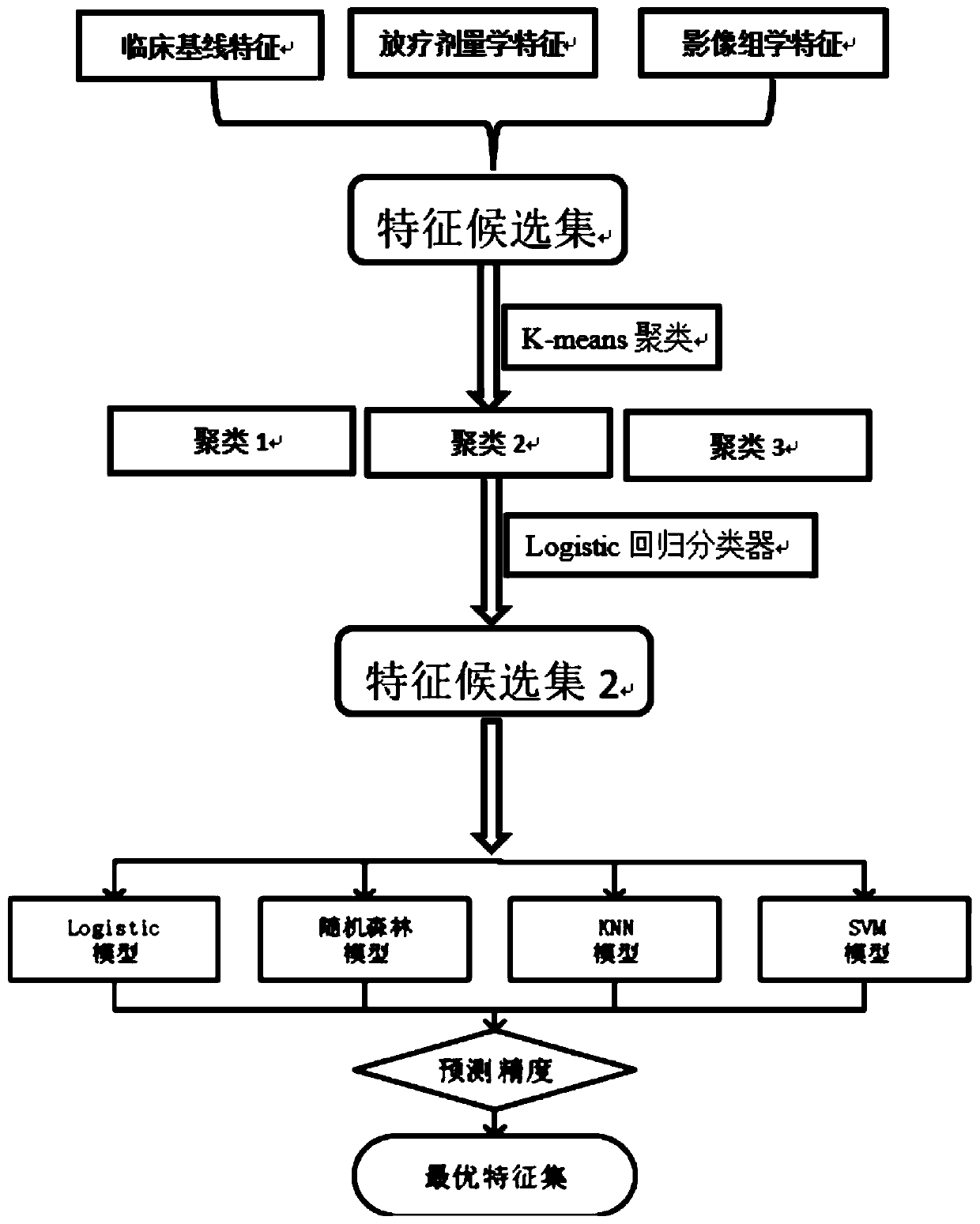Method for predicting complications of normal tissue organs after tumor radiotherapy
A radiotherapy technology for tissues, organs and tumors, applied in radiotherapy, X-ray/γ-ray/particle irradiation therapy, treatment, etc., can solve the problems of not being widely applicable, lack of pertinence and planning, and low degree of accuracy, and achieve improvement Effect of treatment and quality of life in the later stage, improvement of prediction accuracy, effect of reducing side effects and complications
- Summary
- Abstract
- Description
- Claims
- Application Information
AI Technical Summary
Problems solved by technology
Method used
Image
Examples
specific Embodiment approach
[0033] A method for predicting complications of normal tissues and organs after radiotherapy for tumors, characterized in that the method for predicting mainly includes the following steps:
[0034] S1. Obtain Y modal image data of several radiotherapy patients in X periods, and obtain information on the occurrence, type, and time of organ-at-risk complications of radiotherapy patients after radiotherapy, for example, the time of occurrence is after the end of treatment In the mth month, a multimodal image database is established; further, multimodal image data include diagnostic CT, simulated positioning CT, different sequences of multi-parameter MR images, PET / CT, B-ultrasound images, CBCT images and conventional X-rays image data;
[0035] S2. Using a segmentation method to extract image data of organs at risk near the tumor target area from the multimodal image database; the segmentation method is automatic or manual segmentation, and automatic segmentation includes but is...
PUM
 Login to View More
Login to View More Abstract
Description
Claims
Application Information
 Login to View More
Login to View More - R&D
- Intellectual Property
- Life Sciences
- Materials
- Tech Scout
- Unparalleled Data Quality
- Higher Quality Content
- 60% Fewer Hallucinations
Browse by: Latest US Patents, China's latest patents, Technical Efficacy Thesaurus, Application Domain, Technology Topic, Popular Technical Reports.
© 2025 PatSnap. All rights reserved.Legal|Privacy policy|Modern Slavery Act Transparency Statement|Sitemap|About US| Contact US: help@patsnap.com

